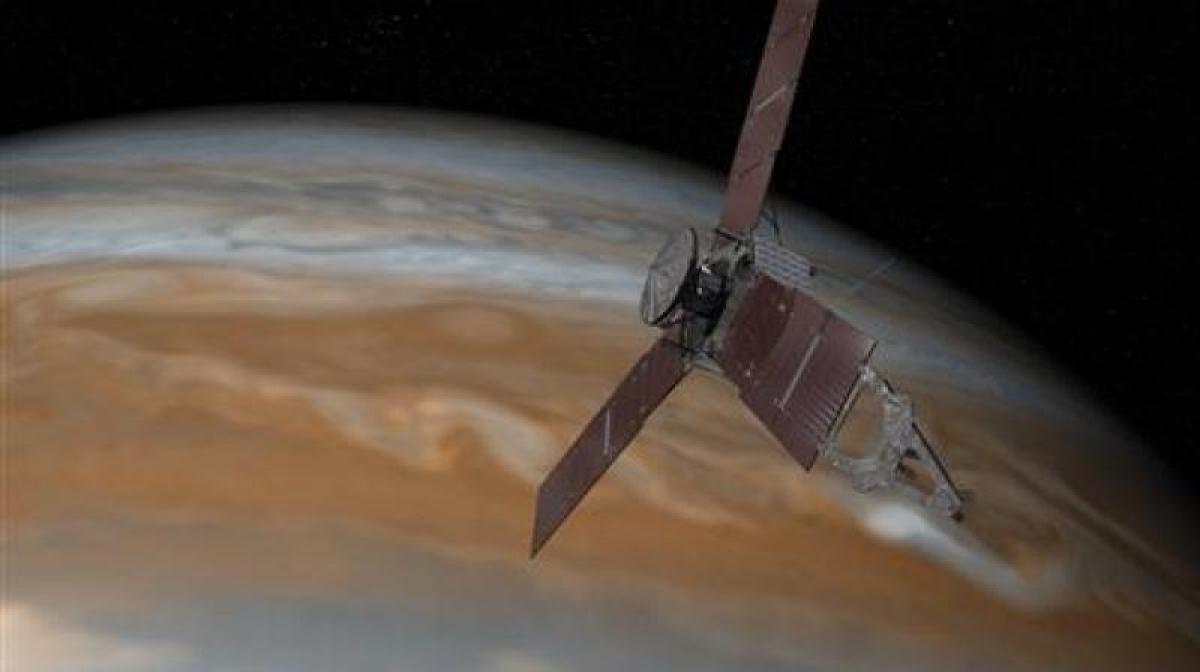Live
- Grassroots democracy, an idea whose time has come
- Bejan Daruwalla’s horoscope
- THE ‘DIVI SEEMA GANDHI’
- BJP cadre told to be part of development agenda
- Hina Khan goes snorkeling in Maldives: The ocean humbles me
- Living to Dance
- MyVoice: Views of our readers 17th November 2024
- Congress dares Kishan to bathe in Musi
- Kishan launches Musi Nidra programme
- ‘Yuva Utsav-2024’ commences
Just In

The fate of European Space Agency\'s Schiaparelli Mars lander that went silent sometime before it was expected to touch down on the Red Planet\'s surface on Wednesday is far from clear.
London: The fate of European Space Agency's Schiaparelli Mars lander that went silent sometime before it was expected to touch down on the Red Planet's surface on Wednesday is far from clear.
Prior to atmospheric entry, contact via the Giant Metrewave Radio Telescope (GMRT), the world's largest interferometric array, located near Pune, India, was established just after it began transmitting a beacon signal 75 minutes before reaching the upper layers of the Martian atmosphere.
However, the signal was lost some time prior to landing, ESA said.
A series of windows have been programmed to listen for signals coming from the lander via ESA'S Mars Express and NASA's Mars Reconnaissance Orbiter (MRO) and Mars Atmosphere & Volatile Evolution (MAVEN) probes, it added.
ESA and the Russian Federal Space Agency (Roscosmos) launched ExoMars 2016 probe in March this year to find if the Red Planet has traces of alien life.
While the Trace Gas Orbiter (TGO) of the ExoMars 2016 successfully performed the long 139-minute burn required to be captured by Mars and entered an elliptical orbit around the Red Planet on Wednesday, contact was lost with the mission's test lander from the surface
The TGO is now on its planned orbit around Mars.
European Space Agency teams at the European Space Operations Centre (ESOC) in Darmstadt, Germany, are monitoring the health of their second orbiter around Mars, which joins the 13-year old Mars Express.
The ESOC teams are trying to confirm contact with the entry, descent and landing demonstrator module (EDM), Schiaparelli, which entered the Martian atmosphere some 107 minutes after TGO started its own orbit insertion manoeuvre.
The 577-kg EDM was released by the TGO on October 16. Schiaparelli was programmed to autonomously perform an automated landing sequence, with parachute deployment and front heat shield release between 11 and 7 km, followed by a retrorocket braking starting at 1,100 m from the ground, and a final fall from a height of two m protected by a crushable structure.
If Schiaparelli reached the surface safely, its batteries should be able to support operations for three to ten days, offering multiple opportunities to re-establish a communication link, ESA pointed out.
TGO is equipped with a suite of science instruments in order to study the Martian environment from orbit. Although mostly a technology demonstrator, Schiaparelli is also carrying a small science payload to perform some observations from ground.
ExoMars 2016 is the first part of a two-fold international endeavour conducted by ESA in cooperation with Roskosmos in Russia that will also encompass the ExoMars 2020 mission.
Due in 2020, the second ExoMars mission will include a Russian lander and a European rover, which will drill down to 2 m underground to look for pristine organic material.

© 2024 Hyderabad Media House Limited/The Hans India. All rights reserved. Powered by hocalwire.com







